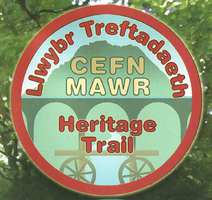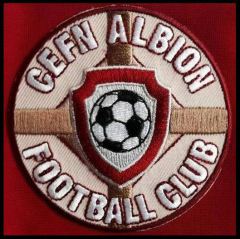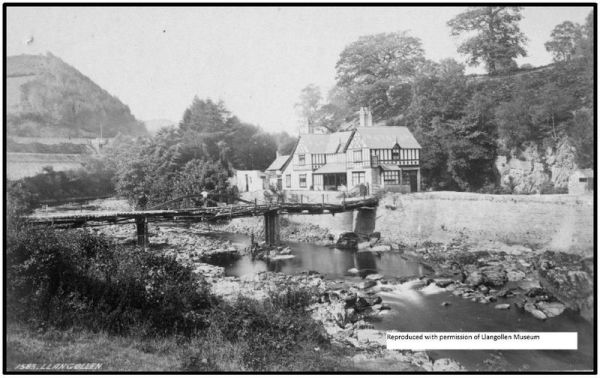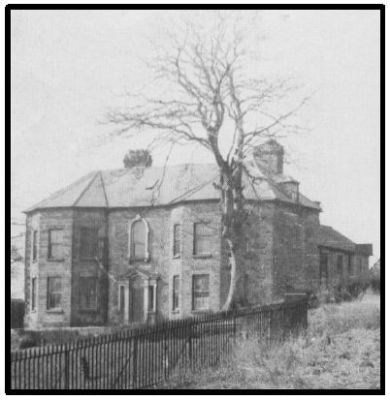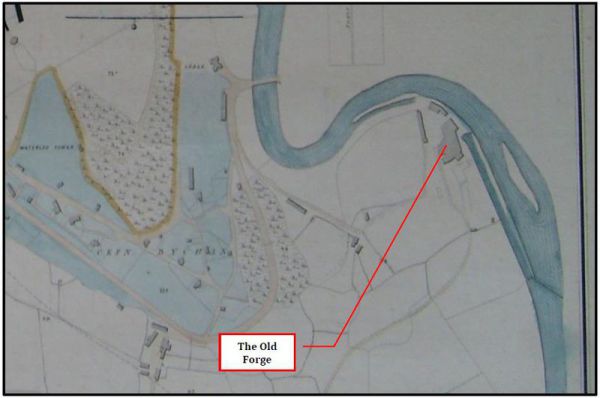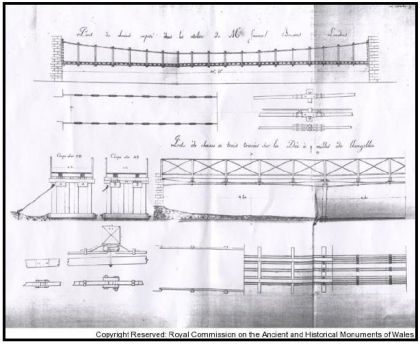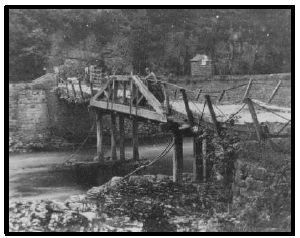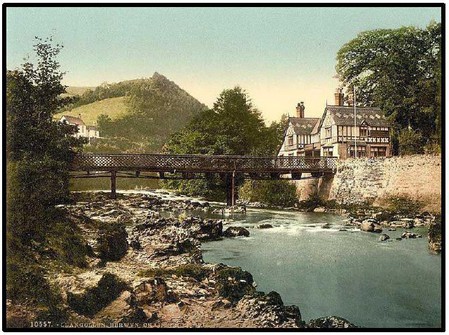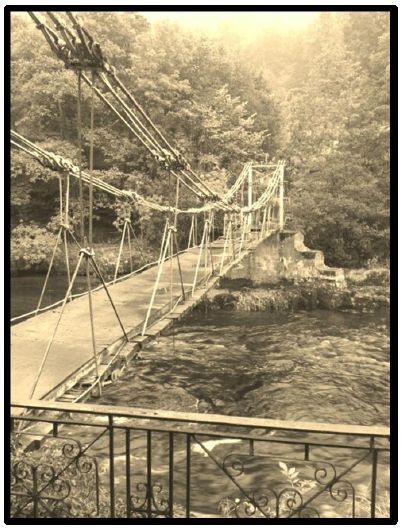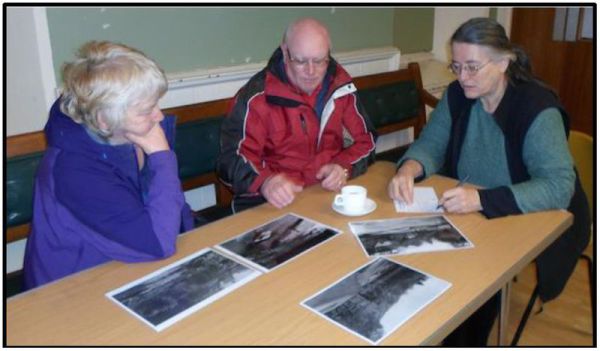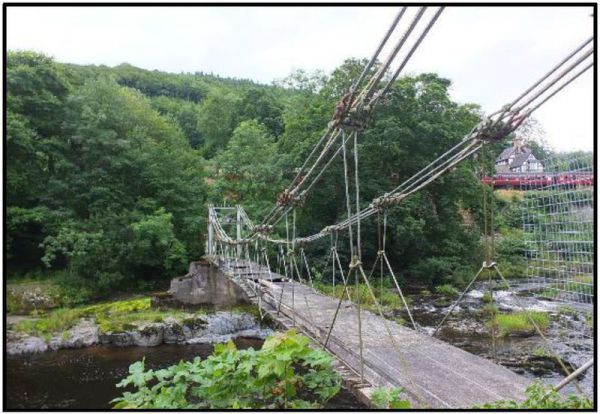The Chain Bridge Llangollen
Exuperius Pickering built the first Chain Bridge in 1817, to link the feeder channel for the Ellesmere canal at that time (later to be renamed the Llangollen Canal) to the London to Hollyhead Road as being built by Thomas Telford at the same time. This then enabled him to transfer his coal, lime and iron bar supplies across the River Dee via the Chain Bridge for transport further into Wales and on to Corwen along the London to Hollyhead Road, minimizing the tolls he would have to pay to cross the Llangollen Bridge.
Exuperius Pickering lived in the Plas Kynaston Hall and operated the Plas Kynaston Colliery, Lime Kilns, Coke Ovens and Blast Furnace on what had been the Plas Kynaston Estate at what would eventually become Cefn Mawr. Cefn Mawr and the Plas Kynaston Estate were rich with the minerals required to make good quality iron as time has proved. The forge that made the original chains for the Chain Bridge may well have been the Old Forge at Cefn Bychan & Newbridge as this was a forge of some considerable size at the time, much bigger than the then new Plas Kynaston Iron Foundry built and run by William “Merlin” Hazeldine and famous for casting the iron work for the Pontcysyllte Aqueduct. Please see the Plas Kynaston Foundry page on our website for more information.
The “Old Forge” by the River Dee near New Bridge and Cefn Bychan, note the forge was built here as this was originally constructed before the age of steam, and hence used the River Dee as a source of mechanical power to drive the bellows etc.
Pickering’s bridge was constructed of wooden decking supported by wrought iron chains from below. This was then capped with earth and stone to give a form of roadway. Six oak pillars also supported the bridge over river bed, substantial enough to withstand heavy floodwaters.
In 1819 detailed survey drawings of this bridge were made by a French Industrial spy, J. Dutens. His report read ‘one cannot assign a limit to the genius… there exist in London examples of chain bridges, but the conception of the bridge of the Dee is preferable’. Note the original bridge is the lower one in the above drawing.
By 1876 the bridge was in a poor state of repair and Henry Robertson, a railway engineer and co-owner of Brymbo Steelworks, bought the bridge.
His design is known to have closely followed that of the first structure, the supporting pillars being of iron rather than oak and retaining the chain links as supports for the deck. This bridge was used by locals as well as tourists who would travel on the steam train or horse drawn canal boats to visit the bridge.
Then in 1928, the Bridge was destroyed by a heavy flood but miraculously, the chain links survived. Sir HenryBeyer Robertson, the son of the former Railway Engineer, decided to rebuild the crossing along the lines of the Menai Suspension Bridge, reportedly re-using the chains from the original structure. Six of these chains were used to support the deck from above, while a further two again lay underneath the deck. The new design was a great improvement, being of higher strength and unaffected by floods because there was now no necessity for piers to stand on the river bed under the bridge in the middle of the river.
The bridge continued in use until the mid 1980’s when it was deemed to be unsafe and closed to the public. Research carried out since by Royal Commission has been able to show that the design and scale of the chains used in the third structure are so similar to the original, as to lend considerable weight to the hypothesis that, the chains are from the original structure. Perhaps also be backed up by the quality of other major iron works made at Plas Kyanston, Cefn Mawr still in use today.
The third design of Chain Bridge at Llangollen possibly using the original chains as made by / for Exuperius Pickering at the works in Cefn almost 200 years previously!
Now in 2014 a new initiative is being put forward to restore the Chain Bridge once again for public use by the Chain Bridge Project Team.
Printable version of this web page and hoping this helps with the Project, all the best from the PKC Group.
The Chain Bridge Llangollen.pdf
Adobe Acrobat document [972.3 KB]


